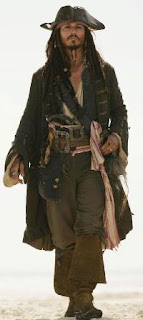What the Heart Wants
C. A. Asbrey
It's the month of Valentine's Day, a celebration of lovers and all things sensual, and people either love it, or love to hate it. Our screens will be full of romantic movies, authors will be showing us their romantic credentials, and restaurants will be hoping to tempt us in for intimate dinner-for-two in some glamorous location.
Those who make money from such events seem to have it all down to a fine art, but do they ever get it wrong? Even slightly? I'm thinking of the occasions
where a leading man has been chosen with the full expectation that he'll ring that primal bell in the audience's soul, only to find that a secondary character sweeps in from behind to steal the show, as well as the movie.These are never heroes, but they're not the villain either—twinkle-eyed rogues who'll steal your money, your love, and your heart. These anti-heroes have flaws. They are often prepared to steal, cheat, and lie; but they do have boundaries they won't cross. Their moral code doesn't drive them—they are protagonists who will do the right thing, but only if they lose too much if they won't, or if it gets them what they want anyway. And sometimes casting directors are just so busy looking at the leading man, they totally overlook the charisma of another actor.
Arguably, the most famous example of this was Johnny Depp's Captain Jack Sparrow in The Pirates of the Caribbean franchise. The popularity of Captain Jack apparently took the studio bosses by surprise. Famously modelled on the drug-and-drink raddled rocker, Keith Richards, Depp played such a heightened, and pantomime, version that they were worried that he really was drunk. Of course, he wasn't. It was such a genius performance that it stole the limelight from Orlando Bloom and Keira Knightly, and he became the standout star of the series. What really took the studio by surprise was women being drawn to Depp's sex appeal in such a bedraggled, erratic, and amoral character.

A similar tale is that of Harrison Ford's depiction of Han Solo, who totally swept the attention towards himself, any time he appeared on screen. That's not to take anything away from the other actors, but the studio intended that Luke Skywalker was to be the standout romantic hero. The audience thought otherwise. They saw the humour, sex-appeal, and sarcasm of the flawed person Ford was portraying, and loved him for it. This was especially summed up in the scene where Princess Leia confesses her love for him, and he simply replied, "I know."
Those two simple words carried a lot more than their literal meaning. the lines were not in the script, and were improvised between Ford and Irvin Kershner, the director. Carrie Fisher played the scene, but she wasn't expecting it. Her surprise is real, but to the audience it showed that Solo was a man with big emotions that he was unable to express, and who hid behind humour and sarcasm.
Once Upon a Time in Hollywood starred both Brad Pitt and Leonardo DiCaprio, but the prevailing opinion is that Pitt stole the movie from DiCaprio with his engaging, macho, individualism. Tarantino said of the real life person who inspired Cliff Booth, "Yeah, there’s a guy — I can’t say his name, I won’t say his name — he was a ‘60s-era guy, into the ‘70s,” says the writer-director. “I had a couple of actors tell me about this guy and I found him a very fascinating character. Then, I’d meet old stunt guys, and I’d bring him up, and they all knew that guy. He was just this dangerous dude. You know big tough actor cowboy-types, who don’t show weakness in front of other men, he scared even them. There was just something scary about the guy and he was kind of indestructible. He could do stunts that nobody could. He had this killer aspect to him and that’s why he ultimately scared people."
People found their natural sense of justice stirred when Booth's character was seen dealing with a version of The Manson Family, performing an act everyone else was too scared to carry out at the time, and which meant that innocent victims were saved in a way we'd have loved real life to go. Audiences loved it.

Another infamous scene stealer we cannot resist is Alan Rickman. In Hollywood movies he's normally cast as either an anti hero or a villain, and his lambent performances fill the screen in numerous roles. Be he appearing as Die Hard's Hans Gruber who exudes scoffing delight at taking people hostage, or as in costume as the brilliantly self-aware Sheriff of Nottingham in Robin Hood: Prince of Thieves, who threw around withering one liners, he was a delight to watch. And in my humble opinion, made those movies. Another charismatic performance was the gloomy, sometimes casually cruel, and ultimately heroic, Severus Snape in the Harry Potter Universe. Viewers loved to hate him in the beginning, but then we came to know the pain he carried, and the sacrifice he made when the woman he loved died. Rickman dripped it all out perfectly, driving us away, before pulling us back in further than we would have gone with a less nuanced performance. Surely, Rickman is the winner in any contest to be the anti hero we love to love—even when they're bad.
So my question is; who is your scene-stealing anti hero?















